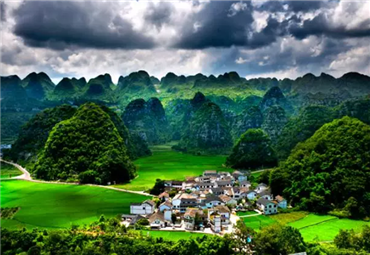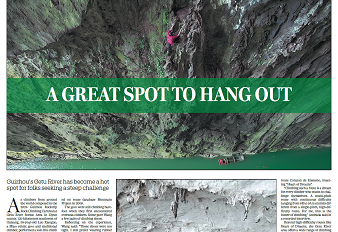Guizhou drafts blueprint for traditional village development
Southwest China's Guizhou province recently issued a five-year blueprint to promote rural revitalization and the high-quality development of its traditional villages by 2025.
The plan sets out eight main tasks for protecting the best in traditional culture. This includes a pathway for passing it on, as well as for protecting and improving the features of traditional villages.
It also details initiatives to improve the living environment, construct public facilities, cultivate the agricultural industry, boost the quality of the tourism industry and establish pilot areas for traditional village protection.
It's understood that Guizhou will identify its important intangible cultural heritage and apply for national protection.
The goal is that by 2023, each traditional village should at least have one item of protected intangible cultural heritage, and an overall data base for intangible cultural heritage will be established in 2025.
Research and practice bases for intangible cultural heritage will be established in traditional villages, to find intangible cultural heritage inheritors and train them. Traditional building craftsmen with certificates, chosen to be representative intangible cultural heritage inheritors, will receive subsidies.
Guizhou is reportedly encouraging traditional villages to use local materials such as wood, stone and soil to conserve their traditional dwellings. Large-scale demolition and re-building – as well as the use of modern building materials such as concrete and marble – are forbidden in reconstruction and renovation.
The province also plans to continue to improve its water supply and ensure that all traditional villages have their own sewage treatment facilities by 2025. Other goals are for the rate of livestock manure multipurpose utilization to reach 80 percent by 2023 – and for traditional villages to collectively add more than 200 standard homestays, hostels and farm stays by 2025.
It is expected that by 2025, Guizhou will build more than 10 traditional village protection areas, to showcase its rich culture and boost the popularity of traditional villages.
京ICP备13028878号-8







 Overview
Overview Guiyang
Guiyang Guian New Area
Guian New Area Liupanshui
Liupanshui Anshun
Anshun Qianxinan
Qianxinan Qiandongnan
Qiandongnan Qiannan
Qiannan Zunyi
Zunyi Tongren
Tongren Bijie
Bijie 75 years on: Guizhou's great leap to prosperity
75 years on: Guizhou's great leap to prosperity China (Guizhou) Intl Alcoholic Beverages Expo
China (Guizhou) Intl Alcoholic Beverages Expo Video: Diplomats discover China's beauty in Guizhou
Video: Diplomats discover China's beauty in Guizhou 

